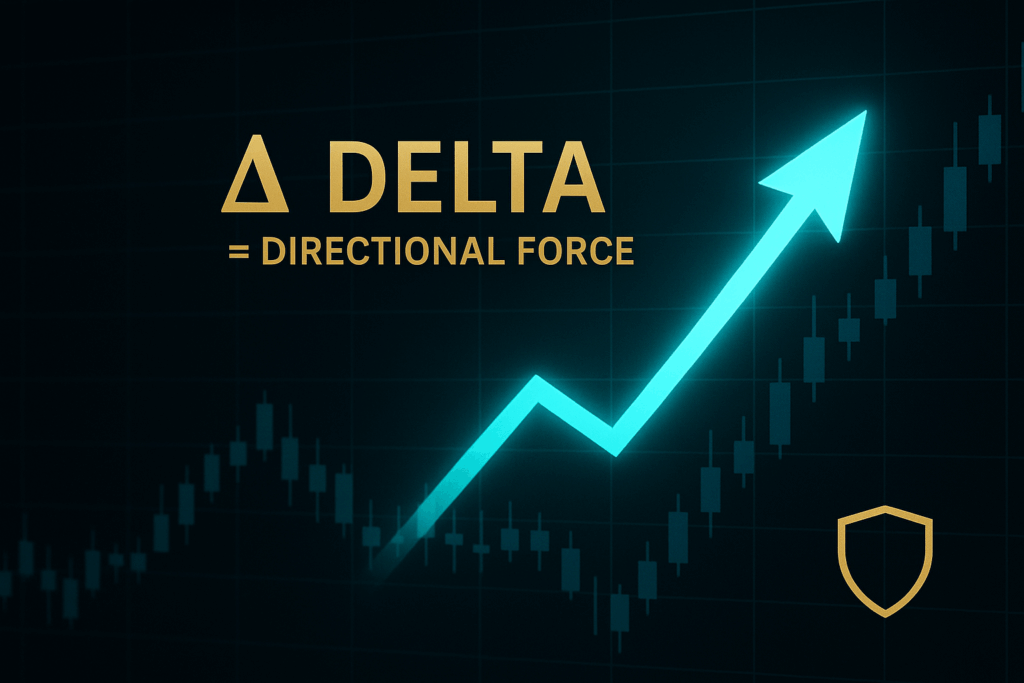How Traders Use Probability to Trade Smarter
When traders look at options, Delta is the first Greek they pay attention to — and for good reason.
Delta tells you how much the option’s price will move when the underlying asset moves $1. But it’s far more than that — it also gives you insight into probabilities, risk exposure, and position structure.
📐 What is Delta?
At its core:
A Delta of 0.50 means the option will gain ~$0.50 if the stock moves up $1.
Calls have positive Delta → they gain when price rises.
Puts have negative Delta → they gain when price falls.
Delta typically ranges from:
0 to 1.00 for calls
-1.00 to 0 for puts
The closer the option is to being “in the money”, the higher the Delta.
🎲 Delta = Probability
There’s a second layer most beginners don’t realise:
Delta also represents the probability that an option will finish in the money at expiry.
A Delta of 0.30 = roughly 30% chance of expiring in the money.
A Delta of 0.80 = roughly 80% chance.
So when you select a Delta, you’re not just choosing risk/reward — you’re choosing how likely the trade is to win.
📈 How Do Traders Use Delta?
✔️ Directional Trading
High-delta options (0.60 to 0.85) move quickly with the underlying. These are often used for:
Short-term momentum plays
Swing trades with high conviction
Rapid directional moves like CPI/FOMC
💼 Portfolio Hedging
Institutions use Delta hedging to stay balanced:
If you’re long equities, you can buy puts with a -0.50 Delta to reduce downside exposure.
Your overall portfolio stays “delta neutral” — meaning it won’t move much if price swings short term.
🧠 Probability-Based Positioning
A trader might structure a multi-leg options spread (like a vertical spread) based on expected Delta outcomes.
Example: Selling a call at 0.30 Delta while buying one at 0.50 Delta — playing the probability edge.
🧮 Real-World Delta Example (NAS100USD)
Let’s say:
NAS100 is trading at 21700
You buy a 21800 Call with Delta = 0.45
If NAS100 jumps to 21850:
Option should gain ≈ $22.50 (0.45 x 50)
Delta will increase as the trade moves in your favour — this is where Gamma comes into play (we’ll cover that soon)
🧠 Titan Summary:
| 🧠 Greek | What It Means | How It’s Used |
|---|---|---|
| Delta | Sensitivity to price change (per $1 move) | Directional trading, hedging, probability planning |
🧱 Key Takeaways:
Delta = Direction + Probability
Used by scalpers, swing traders, and institutions alike
Helps you understand how responsive your position is
Mastering Delta unlocks smarter risk, more confidence, and tighter trade ideas
📌 Coming Next: Theta – The Time Decay Trap
Follow Titan Protect to build your full understanding of the Greeks — one principle at a time.


